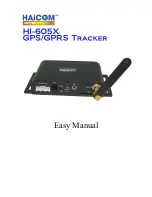
64
www.navig8r.com.au
REFERENCE GUIDE
4.1.4 Route calculation and recalculation
Your software calculates the route based on your preferences:
•
Route planning methods:
Gives a quick route if you can travel at or near the speed limit on all roads. Usually
the best selection for fast and normal cars.
Gives a short route to minimise the distance to travel. Usually practical for
pedestrians, cyclists or slow vehicles. Searching for a short route regardless of the
speed, this route type is rarely practical for normal vehicles.
Combines the benefits of Fast and Short: The software calculates as if it was
calculating the Fast route, but it takes other roads as well to save fuel and reduce
CO
2
emissions.
Results in a route with fewer turns and no difficult manoeuvres. With this option,
you can make your software to take, for example, the motorway instead of a series
of smaller roads or streets.
The times and projected
CO
2
emissions displayed using these options are indicative only. Actual time
and emissions will vary.
•
Vehicle types:
•
Manoeuvre restrictions and directional constraints are taken into
account when planning a route.
•
Roads are used only if access for cars is allowed.
•
Private roads and resident-only roads are used only if they are
inevitable to reach the destination.
•
Walkways are excluded from routes.
•
Neither manoeuvre restrictions nor directional constraints are
taken into account when planning a route.
•
Roads are used only if access for pedestrians is allowed.
•
Controlled-access roads are excluded from routes.
•
A private road is used only if the destination is there.
•
Speed limits are not used in route calculation and an average
walking speed is used when calculating the estimated time of
arrival.
















































